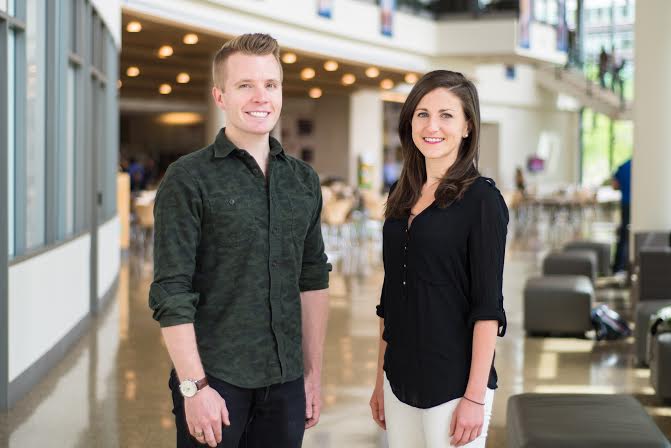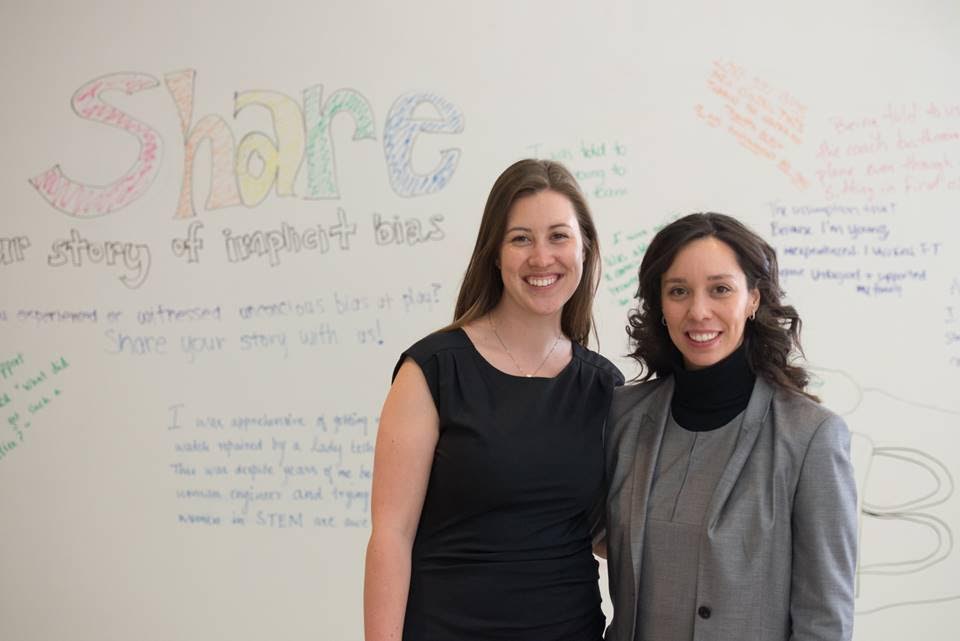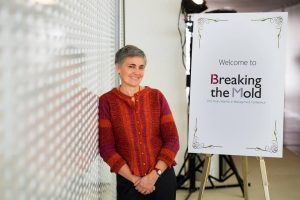
Photo credit: Mimi Phan/MIT Sloan
How important is a business school’s mission statement to the experience of its students? According to recent graduates of the Massachusetts Institute of Technology (MIT) Sloan School of Management, the school’s mission—to develop principled, innovative leaders who improve the world and to generate ideas that advance management practice—influenced where they chose to attend business school, the experiences they had there and the future path of their careers.
Ricky Ashenfelter knew he wanted a school in a market that had a lot of entrepreneurial ventures, which led him to focus his search on San Francisco and Boston. But more than that, he also wanted a school that valued and would offer coursework tied to energy and sustainability. That narrowed his focus further to MIT Sloan, the University of California at Berkeley’s Haas School of Business and Stanford Graduate School of Business, he says.
“What I liked most about Sloan was that it was part of a larger MIT ecosystem, which was not the case for many business schools,” Ashenfelter says. And so he left his consulting job at Deloitte and headed for Boston hoping to find solutions to the problems of food waste in business supply chains.
Students Drawn to Sloan by Its Mission
“The classmates I met from day one were all drawn to MIT Sloan because of its mission,” Ashenfelter says. “Many had motivations to pursue very international, large-scale efforts that would change the world from a technology, sustainability or social standpoint. Sloan naturally attracted students motivated by that,” he says.
To his delight, Ashenfelter found that the school’s emphasis on entrepreneurship and sustainability gave even more color and maturity to the thoughts and desires encapsulated in the mission, he says. “The coursework and extracurricular activities at Sloan encourage people to think big—and beyond traditional jobs like consulting and finance,” he says. Of course, many Sloanies do go into consulting and finance, he notes. “But the time we spend at Sloan embeds that kernel or idea around this mission that unifies us as we go out into the world.”
Before joining Sloan, Ashenfelter had been part of Deloitte’s sustainability and energy practice, working with retail and food companies to address challenges from an environmental perspective. Having seen the issues of food waste in the supply chain first hand, he came to Sloan hoping to explore solutions that he could then take back to a startup or existing business.
“I did not necessarily come to Sloan with a drive to start my own business,” he says. And yet, that’s just what happened. Through the Sloan Entrepreneurship & Innovation (E&I) Track, Ashenfelter found himself bombarded with case studies, user stories and examples of entrepreneurship that quickly had him thinking he could—and should—launch his own startup.
Together he and fellow Sloanie Emily Malina launched Spoiler Alert, a mobile application and online platform enabling the real-time exchange of surplus, expiring and spoiled food. “I came focused on the ideas of food waste and sustainability and she came from the perspective of technology before school. We put our heads together to combine our past experiences to do something with a social and environmental mission that could also produce financial gain,” he says.
In fact, Malina and Ashenfelter met before arriving on campus, at an event for admitted Sloan students in the Washington, DC, area. They would discover that they’d worked just three floors apart from each other in Deloitte’s DC office, though their paths had never crossed, since Ashenfelter worked in the private sector and Malina worked in the public sector, doing consulting around technology implementation for government agencies.
The pair discovered a shared interest in technology and sustainability, and the idea for Spoiler Alert was born. At Sloan, they took several classes together related to their fledgling business, both as part of the E&I Track and as part of the school’s Sustainability Initiative, a certificate program designed to foster leadership around sustainability issues. These included a venture product marketing course taught by Senior Lecturer Bill Aulet, HubSpot co-founder Brian Halligan and Kayak co-founder Paul English, as well as classes on technology sales and energy ventures. Both also took advantage of the resources of the Martin Trust Center for MIT Entrepreneurship.
To round out their individual interests, they took a range of courses separately as well and were involved in different extracurricular activities, Ashenfelter notes. He was a member of the student-led Energy Club and served as managing director of the MIT Clean Energy Prize, a student-run business-plan competition that distributes more than $300,000 to new ventures focused on addressing global energy problems. She was actively involved in the MIT $100K Entrepreneurship Competition.
Simultaneously, the duo ran a pilot program for Spoiler Alert from January through March of this year, working with eight Massachusetts-based food organizations, including the Greater Boston Food Bank. As part of the pilot, close to 8,000 pounds of food were posted for donation.
On Friday, Ashenfelter and Malina both graduated from Sloan as part of the Class of 2015. They plan to release the Spoiler Alert app beyond Boston and start raising capital, remaining in Cambridge to work on the venture full time.
And so Sloan’s mission begins to ripple out into the world.
Spotlight on Unconscious Bias
Another Sloan student graduating last Friday was similarly impacted by the school’s mission, though in very different ways. Elena Mendez-Escobar holds a PhD in physics and worked at McKinsey for three years before coming to Sloan, sponsored by her company. “I chose Sloan because the Sloan alumni I have met were the kind of people I like to work with and had this incredible sense of collaboration,” she says. “I didn’t realize the mission would be so important,” she confesses. “But so many students and professors here talk about the values and the mission of the school—it really made me fall in love with MIT Sloan,” she says.

Mendez-Escobar, a native of Spain, transferred to McKinsey’s Boston office a year before coming to Sloan because her physicist husband got a job at MIT. She gave birth to her second child just months before enrolling in the MBA program. One of the things she found herself thinking about most during her first year as an MBA student was the lack of women in leadership positions in business, she says.
“I had it in my mind that I wanted to do something about that,” she recalls. She remembers hearing an interview with Lean In author Sheryl Sandberg, in which the Facebook chief operating officer was asked what companies can do to increase women’s leadership. Sandberg talked about unconscious bias training. “That spoke to me a lot,” says Mendez-Escobar, who began doing research around unconscious bias, discovering that it serves as an invisible barrier in developed countries where many of the structural barriers to diversity have been removed.
“At Sloan, where we have so many future business leaders, I had the thought that if we could have a conversation and really understand these subtle mechanisms and learn the tools necessary to remove these barriers, that could have a huge impact on future companies,” she says.
Breaking the Mold Conference Sells Out
As co-chair of the Sloan Women in Management (SWIM) Club, Mendez-Escobar helped spearhead a series of events during the fall of 2014 focused on unconscious bias, leading up to the annual SWIM conference in February 2015. Called Breaking the Mold, the conference was designed to help students understand what unconscious bias is and develop approaches to managing it in the business world.
As an example of unconscious bias, Mendez-Escobar points to research conducted by a recent visiting professor to Sloan, Modupe Akinola. Together with other experts in unconscious bias, Akinola sent emails to more than 6,500 randomly selected professors at American universities. The emails, from fictional prospective students, were identical and written in flawless English, but they featured a range of male and female names, with varying ethnicities. The call-back rate in response to these emails, however, was not identical. Emails purportedly sent by white males, for instance, were much more likely to receive a response than those sent by Asian females, the researchers found.
“That is not something these professors were doing on purpose,” notes Mendez-Escobar. “But there is something in the way we think that gives rise to those kinds of biases,” she says. The good news is that recognizing this bias then suggests a very easy intervention to combat it where corporate hiring is concerned, namely having the first resume review be name blind, she points out.

The hope with the Breaking the Mold conference was to draw attention to this type of unconscious bias and help attendees come up with strategies to combat it. “When I started thinking about unconscious bias and how to tackle this problem, I never thought the initiative would get as big as it did,” Mendez-Escobar says. In all, the events she and SWIM co-founder Maria Troein helped organize drew more than 500 people. The conference sold out two weeks before it started and, unprecedented for prior SWIM conferences, a full third of the attendees were male.
Keynote speakers included former McDonald’s President Jan Fields and Sloan alumna Robin Chase, Zipcar founder and Buzzcar founder and CEO. The conference also included an interactive workshop called “What Policing Can Teach Us About Navigating Unconscious Bias.” Led by Anna Laszlo, director of the organization Fair and Impartial Policing, the workshop invited participants to examine unconscious bias in high-pressure situations and how to employ techniques to manage biases and the impact they can have on organizations.
“Maybe I Can Organize a Seminar”
“I remember thinking, ‘Maybe I can organize a seminar,’” she says. She quickly learned that she could aim much higher. Hoping for a team of 10 to 15 students to help organize the conference, she was amazed when more than 50 signed up. “That’s why we were able to do so many events, because there were so many people interested in it.”
Encouragement from the Sloan administration and students pushed Mendez-Escobar well beyond her initial goals. “People kept giving me suggestions of people to reach out to at Sloan and in the larger MIT community,” she says. It was at the urging of the school’s administration that she pursued the idea of creating a mini-documentary on the subject of unconscious bias, she notes.
“I have never before experienced so much encouragement,” she says. “In the past, as a woman, I would have an idea and kill it myself before I even took it anywhere,” she says. Not so at Sloan. “I was surrounded by people giving me the encouragement to be confident in my own ideas,” she says.
One such situation arose when, having scheduled a meeting with the head of MIT’s Department of Women and Gender Studies to discuss how they might work together, she found herself being invited to teach a course on unconscious bias to undergraduates. “At the beginning I was completely overwhelmed and said, ‘No, I don’t think I’m the right person for this.’” But reminded by the Sloan administration that she had plenty of teaching experience while doing her PhD and that she had certainly developed an expertise in unconscious bias, she accepted the position. “They pushed me to take an opportunity that maybe three years ago I would have refused,” she says. It proved to be a wonderful experience, she adds.
These experiences have made Mendez-Escobar one of the biggest proponents of the Sloan mission. “Thanks to Sloan’s mission, something that was a very small idea has become something very big,” she says.
As with Ashenfelter and Malina’s ideas around sustainability and the supply chain, Mendez-Escobar’s ideas around unconscious bias are poised to ripple out from MIT Sloan. She has already been involved with the team at McKinsey that oversees hiring and promoting processes to discuss how they might implement best practices to avoid the unwanted consequences of unconscious bias. She hopes, upon returning to McKinsey, to do the same with the clients with whom she works.
“Part of why we started this was to help people in their companies after Sloan,” she says. “Everyone has a problem finding talent and diversity, and this is something that other companies beyond McKinsey will be interested in knowing more about,” she says. Especially as research shows that companies with more diverse leadership teams prove to be top financial performers, she adds.
Down the line, she fully intends to stay involved with MIT around issues of unconscious bias. If asked, she would gladly continue to teach a class to undergraduates, and she would also be open to developing a workshop with business school students on how to improve processes around hiring and promotion.
Given that these MIT Sloan students represent just a small fraction of the more than 400 MBAs who graduated on Friday, imagine how far and in how many different directions the school’s mission stands to ripple out from here.
Find out how MIT Sloan’s mission statement plays into this year’s admissions process.








